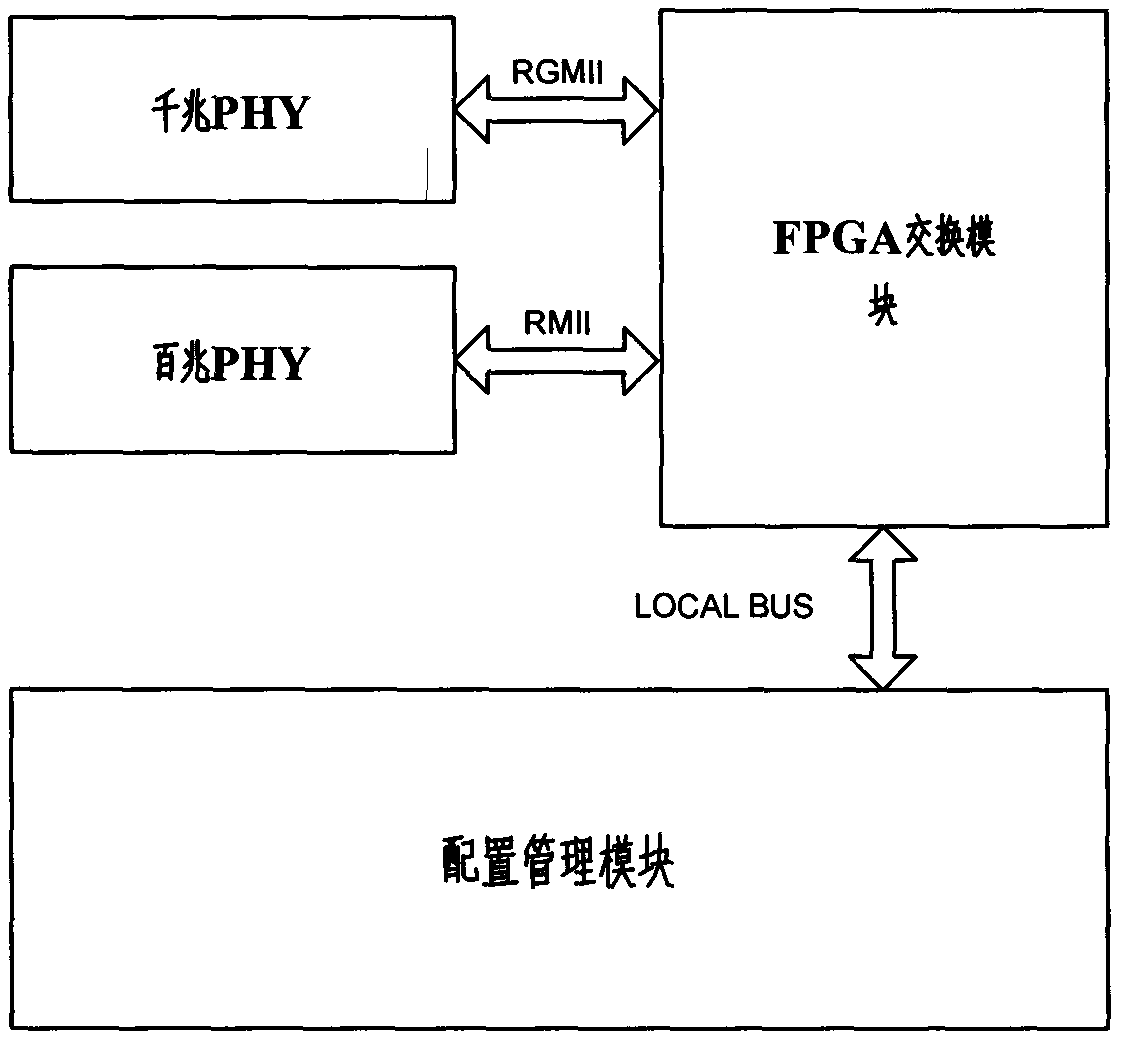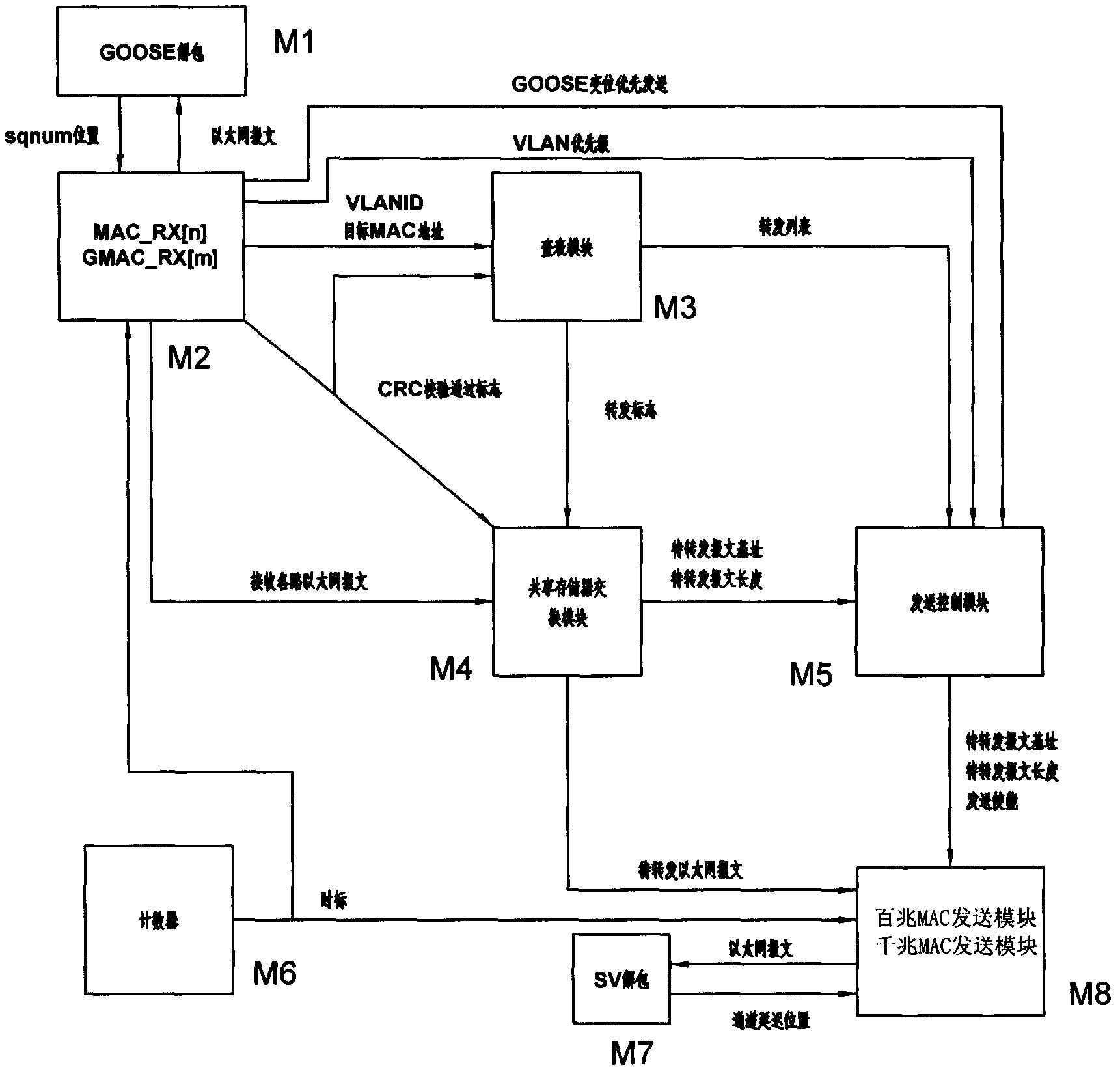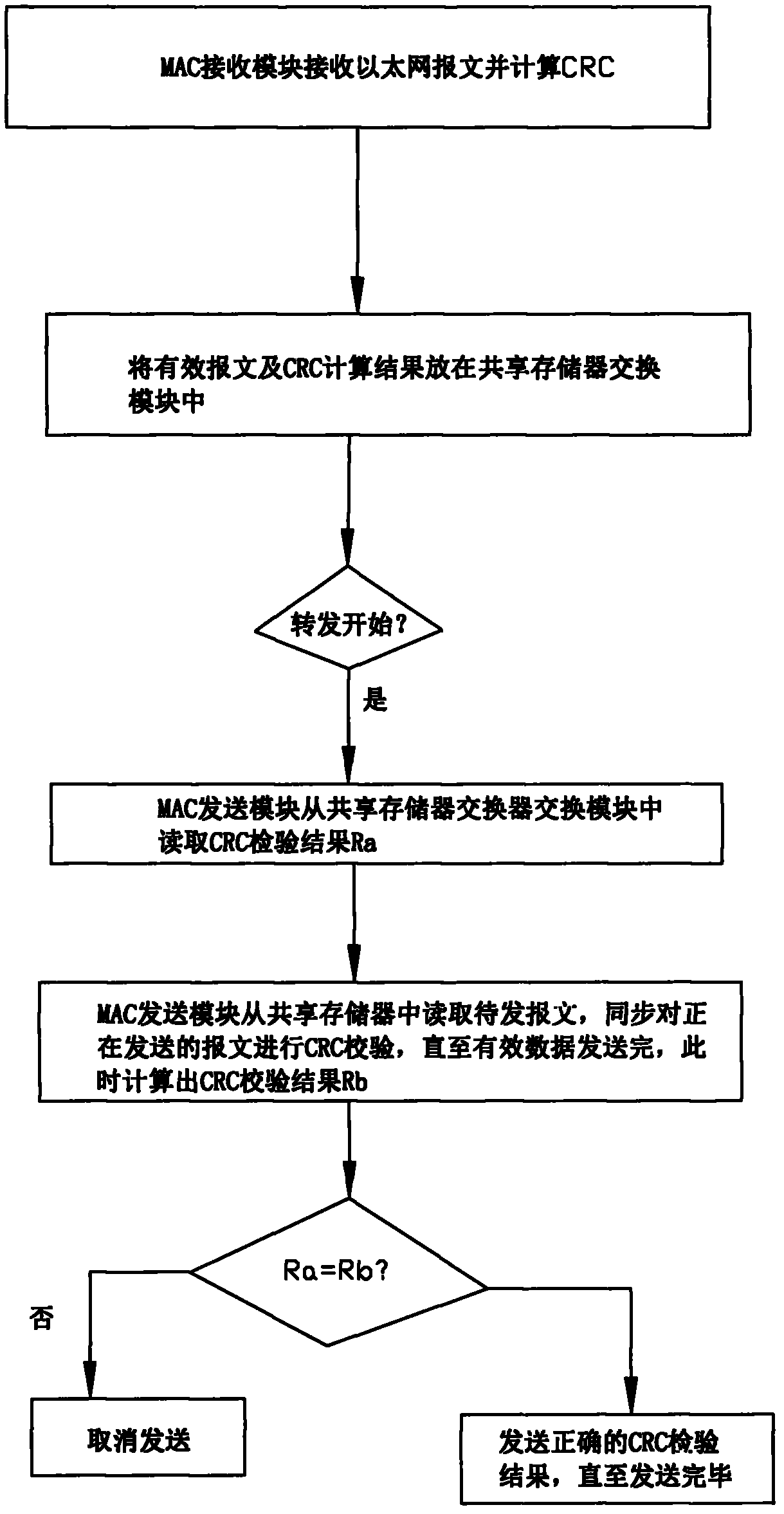Digital substation process level data exchanging device
A technology of data exchange and process layer, which is applied in the direction of data exchange network, digital transmission system, electrical components, etc., can solve the problems of network paralysis, GOOSE distorted messages cannot be reliably forwarded, etc., achieve accurate and fast filtering, guarantee reliability and Real-time, reducing the effect of construction difficulty
- Summary
- Abstract
- Description
- Claims
- Application Information
AI Technical Summary
Problems solved by technology
Method used
Image
Examples
Embodiment 1
[0016] Figure 1 to Figure 3 A specific embodiment of the invention is shown in which figure 1 It is a structural block diagram of the present invention; figure 2 It is a functional block diagram of the FPGA switching module in the present invention; image 3 It is a flow chart of verifying message correctness in step J in the present invention.
[0017] See Figure 1 to Figure 3 A digital substation process layer data exchange device includes an FPGA exchange module, a configuration management module connected with the FPGA exchange module, and an optical Ethernet PHY connected with the FPGA exchange module.
[0018] The data conversion of its FPGA switching module includes the following steps:
[0019] Step A, the MAC receiving module (M2) serially shifts and receives all messages, latches the target MAC address, VlanID, Vlan priority and message type during the receiving process, and records the current time when an SV message is detected. mark;
[0020] Step B, GOOS...
PUM
 Login to View More
Login to View More Abstract
Description
Claims
Application Information
 Login to View More
Login to View More - R&D
- Intellectual Property
- Life Sciences
- Materials
- Tech Scout
- Unparalleled Data Quality
- Higher Quality Content
- 60% Fewer Hallucinations
Browse by: Latest US Patents, China's latest patents, Technical Efficacy Thesaurus, Application Domain, Technology Topic, Popular Technical Reports.
© 2025 PatSnap. All rights reserved.Legal|Privacy policy|Modern Slavery Act Transparency Statement|Sitemap|About US| Contact US: help@patsnap.com



